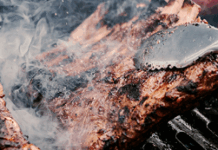MANHATTAN, Kan. —Whether you’re an experienced home-canner or just starting, Kansas State University food scientist Karen Blakeslee said doing a little food safety research is important before you begin.
“Do your homework and learn how to preserve food safely before you jump into the process,” Blakeslee said. “Research has shown that 99% of problems with home food preservation are due to user errors.”
Common errors include old or unsafe recipes, untested recipes or guidelines, wrong jar size, adjusting screw band too tight, not adjusting processing for altitude, and more. For a comprehensive guide on canning, K-State offers online resources.
After doing the research, examine home equipment. Blakeslee said many local K-State Research and Extension offices test some brands of dial gauge pressure canners, excluding All American. There are currently no recommendations to safely can food in electric multi-cooker appliances.
“Even if it has a canning option, there is not enough research to show that foods can be safely canned in those appliances,” Blakeslee said.
Also, she said, ensure canning lids and jars are in good condition. Jars can be reused, but lids may only be used once. Make sure you have enough supplies for the amount of food you plan to can. Some foods may have additional safety considerations.
“If you plan to can plain vegetables or meat, they must be preserved with a pressure canner,” Blakeslee said. “High acid foods, such as fruit, jams, jellies and pickles can be safely canned in a water bath canner.”
Some foods that cannot be safely canned include dense mashed foods, like pumpkin or squash; pasta or rice; and baby foods, excluding fruit puree.
Blakeslee, who is also coordinator of K-State’s Rapid Response Center for food science, publishes a monthly newsletter called You Asked It! that provides numerous tips on being safe and healthy. More information is also available from local extension offices in Kansas.
By Taylor Jamison K-State Research and Extension news service




